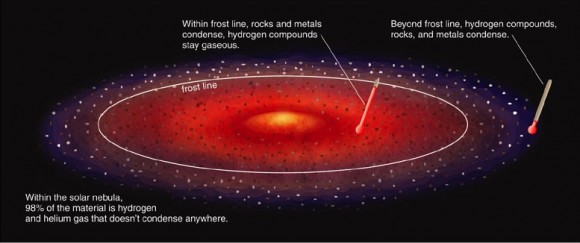
The techniques for finding exoplanets – or planets orbiting distant stars – favor the discovery of large planets orbiting close to their stars. That’s why astronomers at the Harvard-Smithsonian Center for Astrophysics (CfA) were pleased to announce today (July 21, 2014) that they’ve found an exoplanet – which they call Kepler-421b – whose “year” lasts 704 days. That is the longest orbit of any exoplanet discovered via transit to date. A planet in our solar system, Mars, has a similarly sized orbit of 780 days. Meanwhile, most of the 1,800-plus exoplanets discovered to date orbit much closer to their stars than Kepler-421b and have much shorter “years.”
And that’s not the only thing interesting about Kepler-421b. You’ve no doubt heard of a star’s habitable zone, the zone around a star within which a planet might orbit and still have liquid water on its surface. Kepler is on the far edge of the habitable zone in its solar system, near what astronomers call the frost line. In our solar system, it’s this frost line that is said divide the orbits of the four rocky inner planets (Mercury, Venus, Earth & Mars) and the four gas giant planets (Jupiter, Saturn, Uranus & Neptune).
Thus, said the astronomers who discovered it:
… Kepler-421b’s very long year makes it more than merely a new record-holder, it makes it the first transiting planet discovered near the so-called ‘frost-line.’
Finding a planet near its solar system’s frost line could help shed light on the process by which solar system form.
By the way, Kepler-421b is nearly the same size as Uranus, which is about four times larger than the Earth. The host star, Kepler-421, is located about 1,000 light-years from Earth in the direction of the constellation Lyra.
Read more about Kepler-421b’s long year.
Read more about this planet’s location near the frost line of its solar system.

Bottom line: Most of the 1,800-plus exoplanets so far discovered orbit close to their stars and thus have a short “year.” Kepler-421b orbits farther away and has a year of 704 days.











